Abstract
The acquisition of discriminative behavior was studied in three autistic children with high-frequency self-stimulatory behavior. It was found that: (a) the children did not acquire the discrimination while engaged in self-stimulation; (b) suppression of self-stimulation produced an increase in correct responding, with eventual acquisition of the discrimination; (c) successful discrimination learning was always associated with a reduction in self-stimulatory behavior, even when aversive stimuli were not used for suppression.
Full text
PDF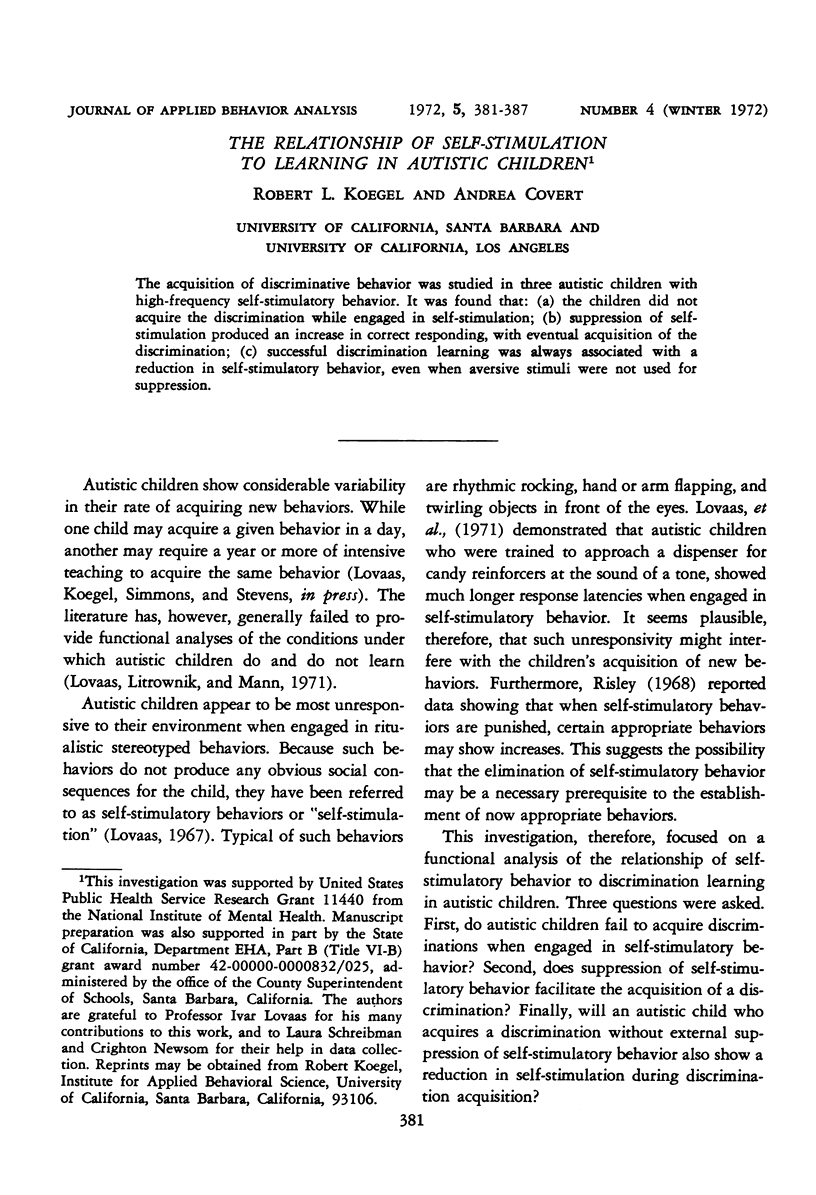
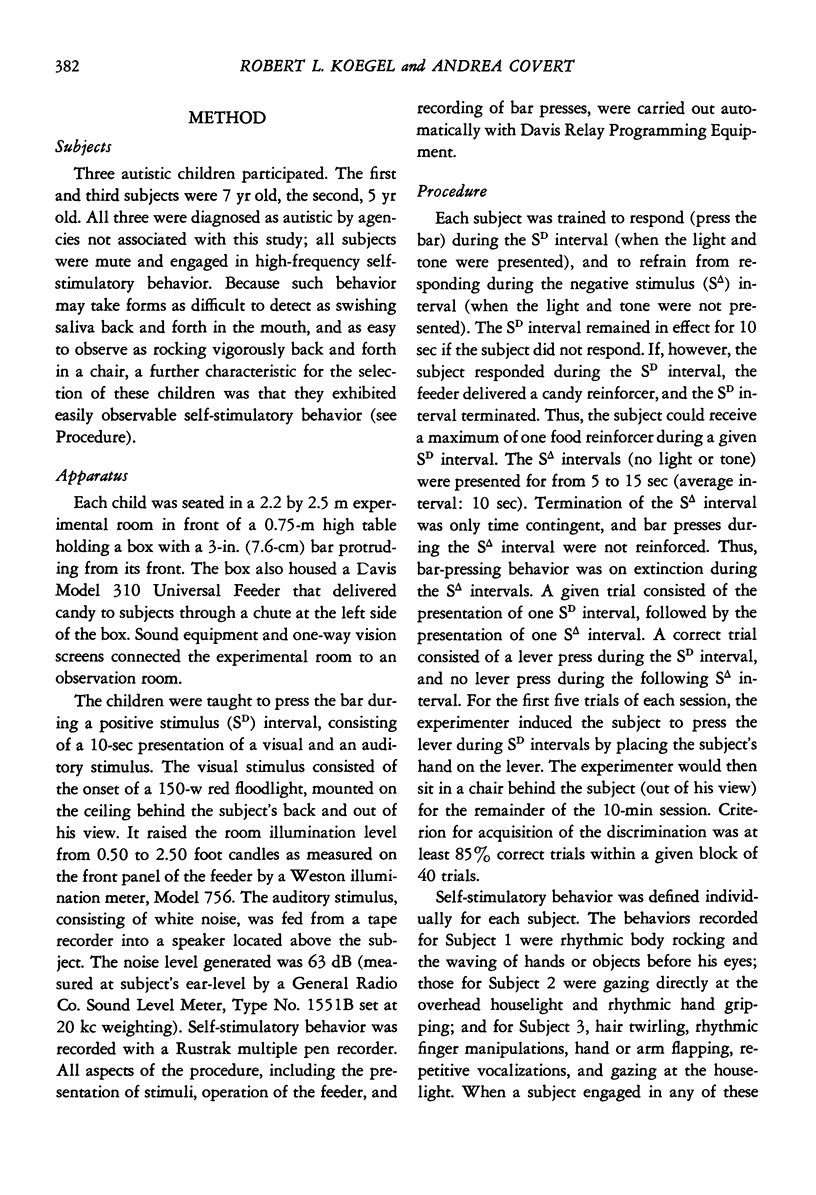

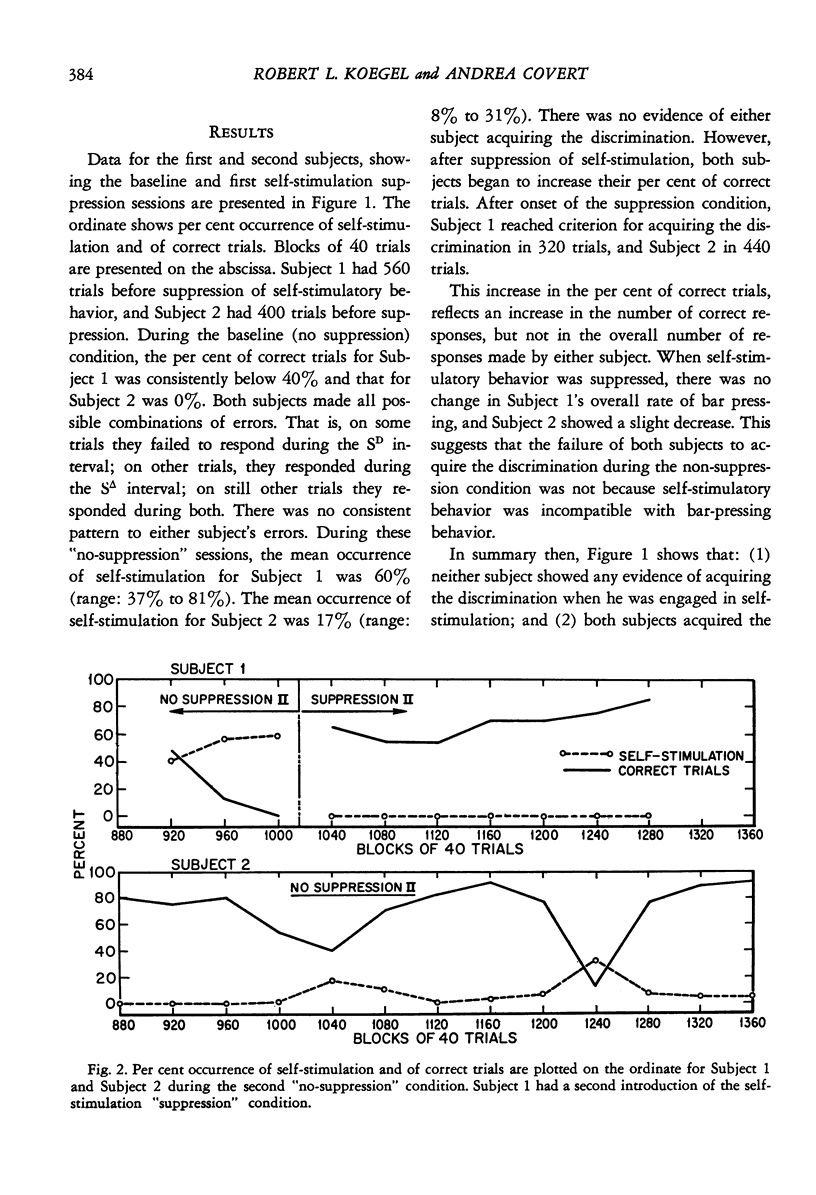
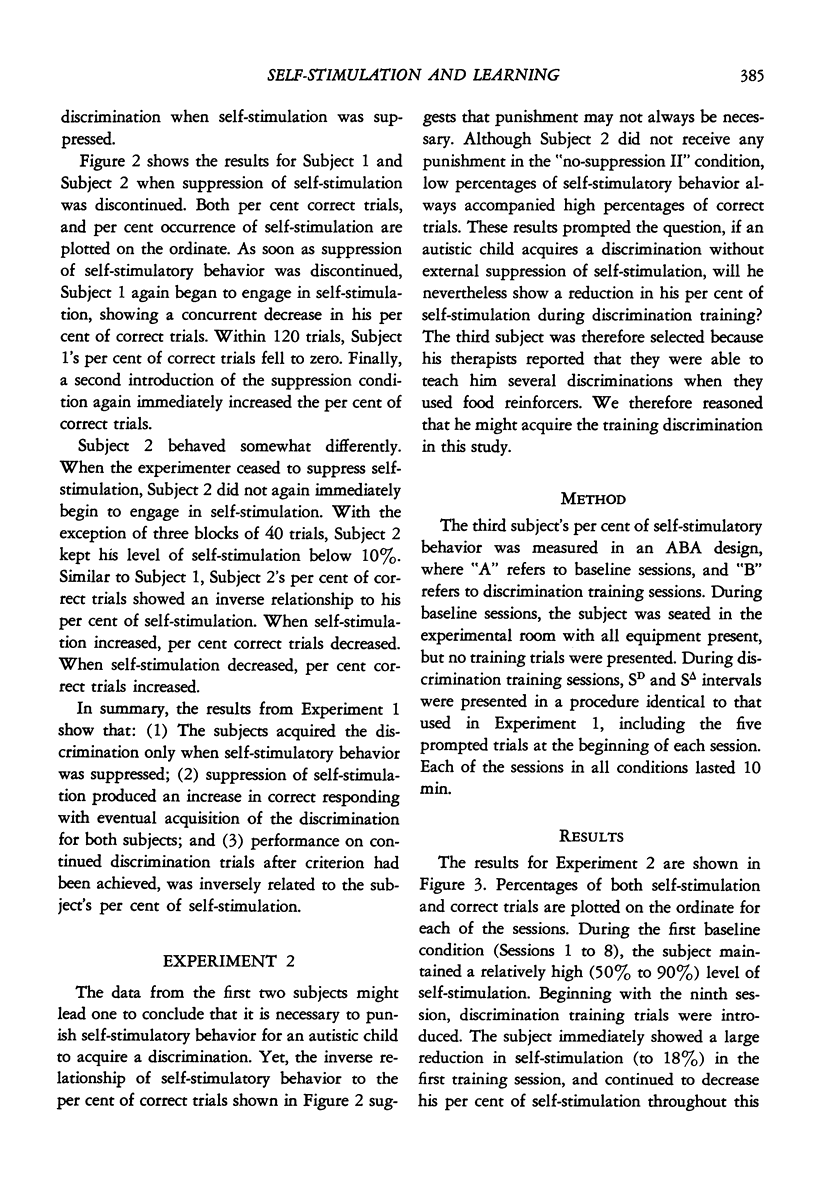
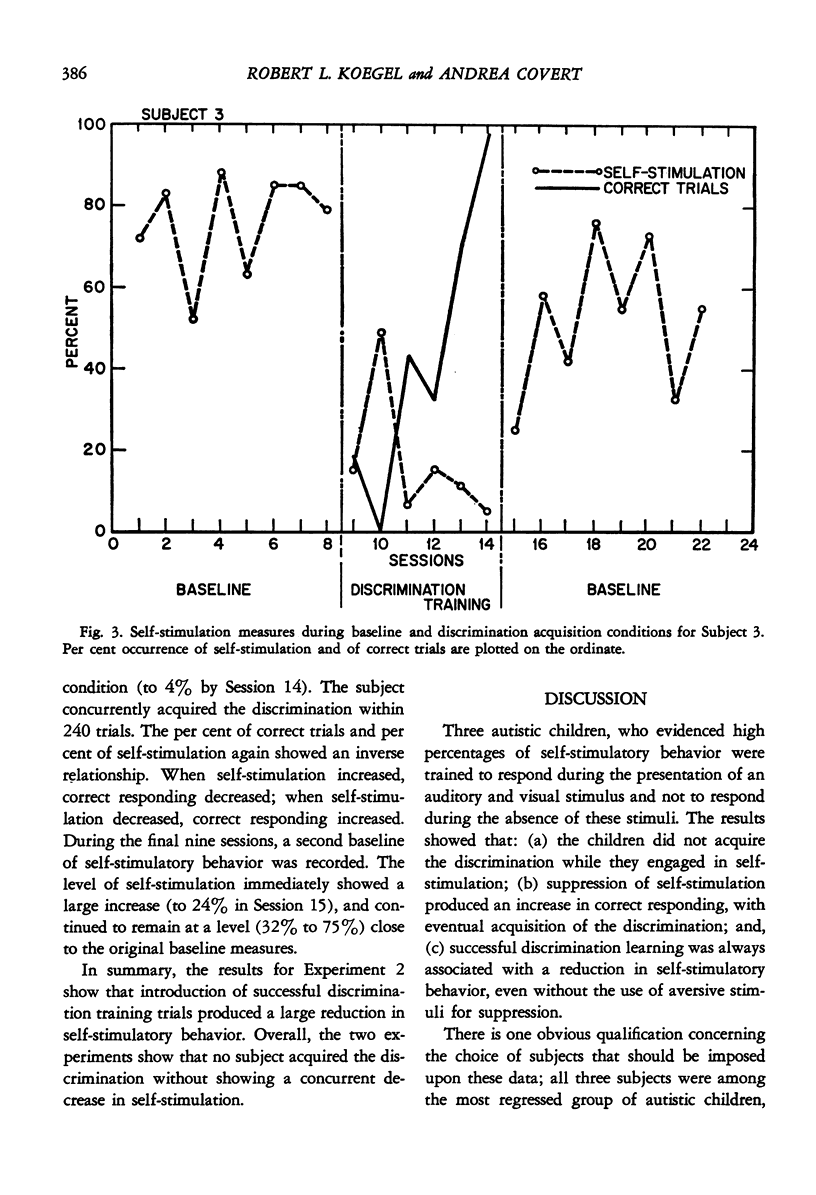

Selected References
These references are in PubMed. This may not be the complete list of references from this article.
- Lovaas O. I., Litrownik A., Mann R. Response latencies to auditory stimuli in autistic children engaged in self-stimulatory behavior. Behav Res Ther. 1971 Feb;9(1):39–49. doi: 10.1016/0005-7967(71)90035-0. [DOI] [PubMed] [Google Scholar]
- Lovaas O. I., Schreibman L., Koegel R., Rehm R. Selective responding by autistic children to multiple sensory input. J Abnorm Psychol. 1971 Jun;77(3):211–222. doi: 10.1037/h0031015. [DOI] [PubMed] [Google Scholar]
- Lovaas O. I., Schreibman L. Stimulus overselectivity of autistic children in a two stimulus situation. Behav Res Ther. 1971 Nov;9(4):305–310. doi: 10.1016/0005-7967(71)90042-8. [DOI] [PubMed] [Google Scholar]
- Risley T. R. The effects and side effects of punishing the autistic behaviors of a deviant child. J Appl Behav Anal. 1968 Spring;1(1):21–34. doi: 10.1901/jaba.1968.1-21. [DOI] [PMC free article] [PubMed] [Google Scholar]


